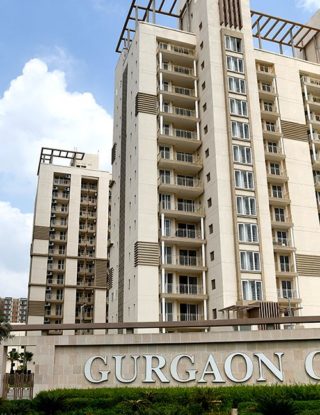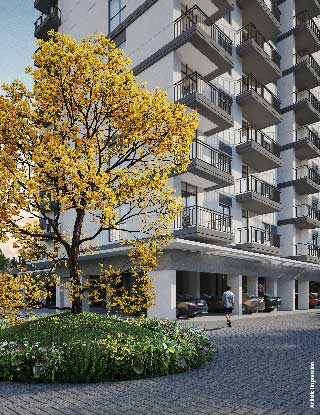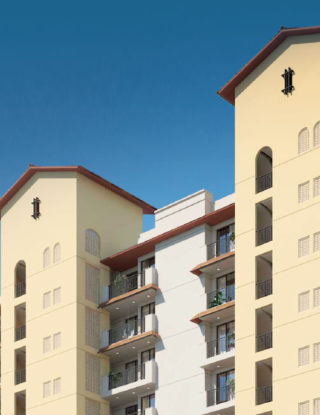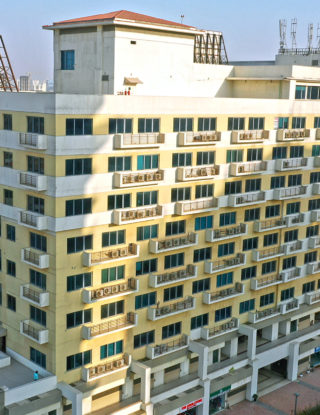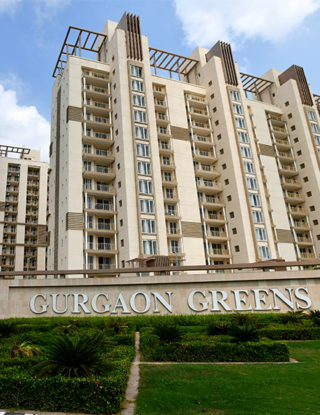The economic well-being of a country is intrinsically linked to the optimal functioning of its real estate sector. A country that is prospering economically will thereby have a flourishing real estate market, propelling that growth. This is especially veritable in the case of India, whose real estate sector is the second-largest employment-generating sector in the country.
Categorically at variance with the faltering global economy, India’s economy is not only standing strong but experiencing a steady momentum of growth, with the international community keen to capitalize on the country’s booming infrastructure, and inviting investment ecosystem. Axiomatically, the country is in the midst of rising income levels, better job opportunities, and a correspondingly augmenting demand for a modern built environment.
The millennials are also entering the real estate market for the first time with diametrically different, sagacious attitudes toward owning residential property. Further with varying classes of commercial spaces emerging as the primary investment vehicle, the real estate industry is irrefutably undergoing a transformative phase.
Let us look at the top real estate trends forecasted to sway the market in 2023, to help you navigate the befuddling terrain of this sector to ensure you make judicious investment decisions.
- Rising demand for residential spaces: The Indian housing market has witnessed a momentous uptick in demand in the post-pandemic years. This is evident in the Reuters report that states how sales in the year 2022 rose by a historic 51 %, with property prices predicted to hike by 7.5% all over India.
- A corollary of the pandemic: The reason for this upswing in demand is multifaceted, not the least of which is the effect the pandemic has had on the psyche of the buyers. The changing office dynamic with work-from-home and hybrid work culture expeditiously becoming the new norm has instilled a desire to own luxurious residential spaces. There is a bid amongst these new buyers for these spaces to be expansive enough to accommodate a comfortable workstation.
- Dwindling Rental Market: People are becoming cognizant of the potential of owning houses vis-a-vis renting one. This is due to the increasing parity of EMI values with the rental amount, thus impelling a downward trend in the rental space. On top of this, the rising income level amongst the working population in the country has further bolstered the desire amongst the populace of being a homeowner.
- NRI investment: Commensurately, the pandemic has also driven the NRIs to increasingly invest in residential spaces in their home country, as they look for secure homes for their family, largely due to the widespread uncertainty faced during the pandemic. With the top seven residential markets in India recording the highest sales in a decade in the first half of 2022, market experts predict a continuation of this trend in 2023.
- Ascend in office spaces being leased: The year 2022 was a particularly propitious year for commercial real estate in India. The government’s zealous approach to developing a robust core social infrastructure and transit system, India’s economic supremacy with a projected 8% GDP growth, liberal foreign direct investment policies, and an educated working force has led to the country fast emerging as the leading global hub of IT and business enterprises.
- A paradigm shift in the global supply chain: With surmounting tension between China and USA, there has been a tangible shift in what was erstwhile considered an internationally acclaimed manufacturing hub. This has led to IT giants like Apple and Intel moving their manufacturing units to India, with many other companies all set to follow the suite.
- Government initiatives: The Indian government has also developed a genial framework of policies and programmes which has further led to the highest ever foreign direct investment inflow of US$ 84.8 billion in FY22. In addition to the increased transparency and ease in buying and selling real estate with the establishment of RERA, the Production Linked Scheme (PLI) is said to considerably influence this growth.The PLI scheme launched by the government in 2021 envisioned to incorporate the country as an internationally acclaimed hub of Electronic Design and Manufacturing has created an augmenting demand for warehouses. This, conjointly with the burgeoning e-commerce industry, is spearheading the demand for warehouses and office spaces in the country.
- A newfangled work culture: Another important factor that is key in the proliferation of demand for office spaces is the emergence of a new hybrid work culture that has led to the rise of flexible, coworking spaces. Even with the great return of the workforce to offices, the pandemic has unalterably changed the way modern workplaces will look and function.
- An emerging asset class of Shop-cum-Office Spaces: The evolving ethos and needs of the workforce, with an emphasis being placed on work-life balance and top-notch amenities being present in the vicinity of workspaces has led to a rise of a new asset class. Commonly known as Shop-cum-Office plots, these commercial land parcels are increasingly becoming the top pick for discerning investors.These spaces provide an integrated blend of commercial and retail spaces, which consolidated provides a twofold beneficial investment space. Working symbiotically to engender growth, these spaces are emerging as the preferred investment destination in 2023.
- Tier 2 and 3 cities surfacing as an ideal investment ecosystem: The last half of a decade has witnessed unparalleled development in tier 2 and 3 cities, backed by robust initiatives by the Indian government. Owing to programmes such as AMRUT and Smart Cities, the locales now boast of advanced core infrastructure with progressive inter and intracity transit systems.In addition to this, these cities provide an attractive alternative to the densely populated and oversaturated market of the major metropolitans, with relatively affordable prices and world-class amenities. A culmination of these factors has led to these micromarkets becoming attractive residential and commercial investment hubs, a trend that is expected to continue.
The real estate market in India today is firmly established as one of the most profitable industries for the country’s economy. It is projected to contribute to 13% of the GDP by 2030 and it brings with it the promise of India as a dominating economic force in the world. The steadfastness of residential assets as an advantageous source of investment coupled with the emergence of new niche commercial assets is surely ushering a new era of investment haven in the country.



